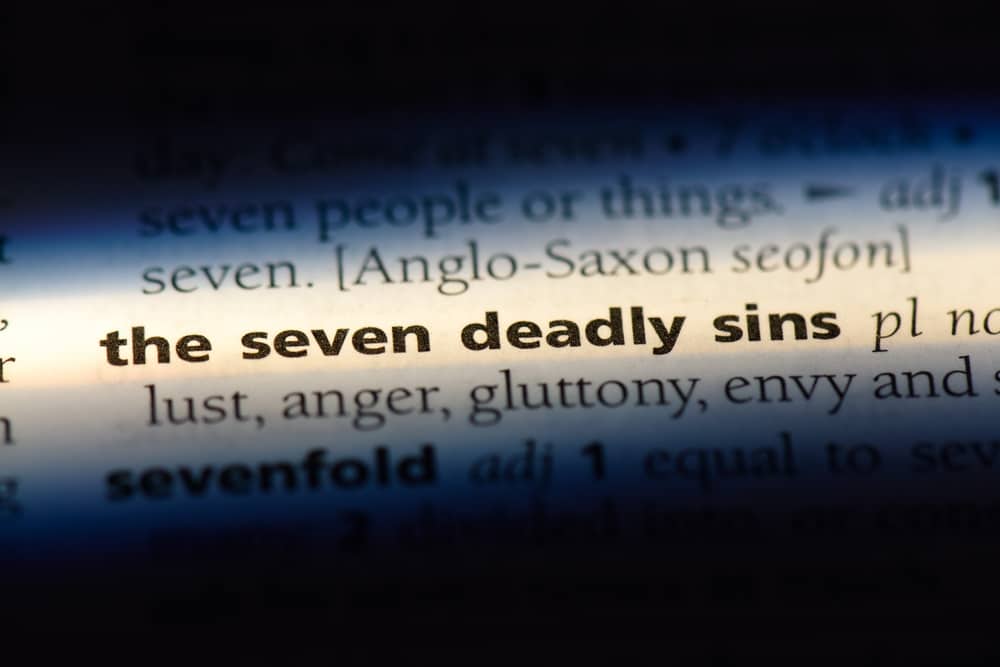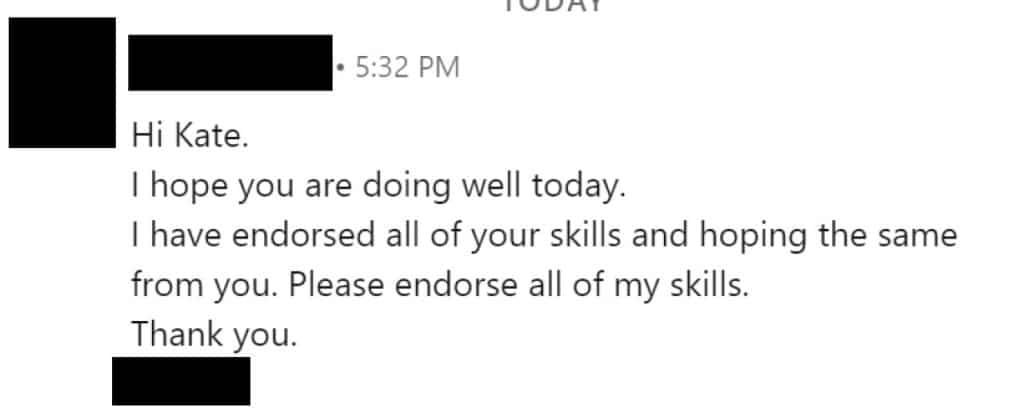Most people play nice on LinkedIn, but some people? They definitely have the devil on their shoulder as they type! How many of the deadly sins in this article are you guilty of?
There are a lot of unwritten rules when it comes to social media.
Post regularly, reply to comments, don’t steal other people’s content, and so on and so on.
Did you know that there are a couple of extra things to bear in mind when you’re posting on LinkedIn? I call these the seven deadly sins.
Well, LinkedIn is a networking site, and Jean-Paul Sartre famously said, “Hell is other people!”
Grab your pitchfork, buff up your cloven hooves, and let’s take a look.
I should probably say now that this post contains a fair bit of swearing. Don’t say I didn’t warn you.
Pride – liking your own posts
I once ran into an argument with some pillock on LinkedIn who didn’t like one of my posts – more about that later.
He said I was ‘arrogant’, ‘egotistic’, and ‘grandiose’.
You know what? I’d have taken him a lot more seriously if he hadn’t liked his own comment.
Liking your own posts and comments on LinkedIn comes across as desperate. And it seems the majority of people agree.
I ran a poll on LinkedIn, and four out of five respondents said that it’s never okay to like your own posts and comments.
Not even if they’re really, really, really good.
The thing with liking your own comments is that it looks vain. You’re fishing for engagement and trying to inflate the popularity of your post.
It’s the equivalent of sticking twenty quid in your tip jar to try and convince people to give you more money.
It’s far better to write good content that organically drives likes, comments, and shares.
Envy – complaining about other people’s achievements
I used to lurk on a subreddit that pointed out ridiculous LinkedIn posts.
You know the sort, the people who wake up at 4am, do five hours of yoga, and drink a wheatgrass and broccoli smoothie before rocking up to work.
However the posts got more and more bitter as time went on. The members would snark on pretty much everything. People celebrating winning awards, getting engaged, having kids.
I ended up leaving just as it wasn’t a fun place to be anymore.
Don’t get me wrong, I’m the first to have a giggle or pick out the holes in overly-corporate posts and messages. There’s plenty of that in my email autopsy article.
But if someone wants to celebrate getting a new puppy or getting the first client for their business, that’s awesome. Good for them.
It’s good to see people talking about their wins, no matter how big or how small.
Sloth – lurking and not engaging
Okay, this one’s not as annoying as the others. But when you do it, you’re not making the most of LinkedIn.
I first started using LinkedIn in 2014 and admittedly didn’t make much of an effort with it.
I logged in a couple of times a month and occasionally liked a post from someone I knew in the real world.
When I started freelancing though? I started posting and engaging pretty much every day.
As a result I’ve met some amazing freelancing friends and get the majority of my writing gigs through the platform.
Here’s an interesting fact for you. LinkedIn has over 1 billion members and 310 million monthly active users.
So that means that only one in three members engage with the platform at least once a month.
Not a lot when you put it that way, right?
And the thing is, you don’t have to do a lot to stand out.
Connect with people you’d like to know more about. Like posts that strike a chord with you and comment with your thoughts. Tell people what you’re doing in the workplace.
Ten minutes a day is all you need.
Hey, if you’re stuck for things to talk about on LinkedIn, I’ve got 30 days of prompts to help you out!
Gluttony – connecting with everyone
Have you ever seen someone’s profile on LinkedIn, and they’ve got the word LION after their name?
It’s not because they have a birthday in August or live in the Pride Lands.
LION stands for ‘LinkedIn Open Networker’, which means these people accept all connection requests that are sent to them.
When I started using LinkedIn more, I accepted connection requests from virtually everyone and sent as many connections out as LinkedIn allowed me to.
This got me into the prestigious ‘500 connections or more’ club, which only half of LinkedIn users are in. Yay, right?
The only issue when you’re not picky with who connects with you, or who you connect with – you get a lot of crap in your newsfeed.
There’s only so many crypto posts you can take before you want to stick your head in the freezer and scream.
As I started using LinkedIn more, I realised quality is better than quantity. So I started paring down the connections that didn’t provide value.
The people who didn’t post at all. The people who posted too much. The people who did nothing but share the company blog. The people who didn’t engage with you, but constantly DMed you sales pitches.
And you know what? I felt a lot better for it.
Lust – sending inappropriate messages
I’m not going to spend much time on this one as it makes me seethe.
But if you send dodgy messages or images to another person, whether on LinkedIn or another social media platform – you’re a dick.
It’s got to the point that if a man sends me a connection request and all our mutual connections are women – I decline the request.
Greed – begging for endorsements
About a year ago I got this DM from someone I was connected with but didn’t know personally (see ‘Gluttony’). She advised that she’d endorsed all my skills and would be grateful if I did the same for her.
Nah, LinkedIn doesn’t work like that.
For those not in the know, you can list your skills in your LinkedIn profile and people you know can endorse you for them.
This shows what you can do and shows other people can vouch for your skillset.
The thing is, your skills section only means something if someone you know endorses you. If a random person who connected with you two minutes ago does it, it means nothing.
It’s like me saying that you have nice hair. I’m sure you do, but it’s a hollow compliment unless I’ve seen your hair, right?
In my experience, random people endorse you on LinkedIn for two reasons. To get endorsements back or to butter you up so they can sell to you. Both of these reasons are equally bad.
The good news is that you can hide endorsements from people you don’t know.
Integrity for the win!
Wrath – getting into arguments
The more I use LinkedIn and the more traction my content gets, the more I see people trying to pick a fight with me in the comments.
This isn’t about people having a difference of opinion – that’s to be expected. If you use LinkedIn as an echo chamber, you’re using it wrong.
I’m talking about people being dickheads for the sake of it. It’s okay to say you don’t agree with someone, but it’s not to call them an wanker, or say that their mum and dad are related.
Be honest and state your opinion but be respectful of others.
And if you start a DM or a comment with “I don’t mean to be a dick, but…”, chances are you’re going to say something that makes you sound like a dick.
Seriously, don’t do it.
In conclusion – it’s nice to be nice, right?
Most people who use LinkedIn use it well. They engage with others and aren’t afraid to have fun, but understand that there are certain things you just can’t do or say.
But some, let’s just say they might feel more at home on other social media platforms. I’m not saying which ones.
Here’s a tip that helps me a lot. Before you hit the publish button on a post, DM, or comment that you’re not sure about, take a five-minute break – go get a coffee or reply to an email.
If you’re umming and aahing over publishing your content after that, it might mean it’s not worth posting.






